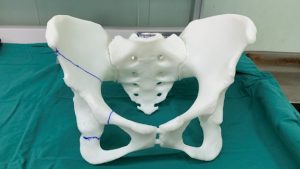As specialists (particularly surgeons) discover novel methods to employ 3D printing in the medical industry, it is becoming a significant trend.
In the orthopedic field, 3D printing is routinely utilized to make customized implants, gadgets, and tools. 3D printing has also been utilized in orthopedics for preoperative planning and educating students and patients more about the treatments.
We’ll look at how 3D printing may benefit the medical industry, with a focus on orthopedic applications.
Preoperative planning and 3D printing are often used in conjunction. When it comes to surgical planning, it’s often employed to create 3D printed models that may be used in difficult orthopedic situations.
In a difficult joint replacement, for example, the surgeon may print an anatomical model copy of the joint to investigate potential barriers and prepare appropriately.
In trauma scenarios, surgeons and researchers may utilize 3D printed replicas of bone fractures to evaluate procedures before the operation even starts.
Surgical guidelines are no exception. These guides may be used to make accurate bone slices during surgery. This procedure cuts down on surgery time and has far-reaching ramifications for the patient, surgeon, and hospital.

The length of the procedure, as well as its efficiency, may be reduced while still providing superior patient results. Using precise 3D printed guidance templates that fit directly onto the bone, cases like complicated abnormalities may be dealt with more effectively.
The use of 3D printed replicas of patient bone fractures is an excellent technique to improve the success rate of orthopedic trauma procedures.
Physicians may use the 3D printed fracture model to observe precisely what’s going on with a fracture before they start surgery or open up a shattered joint. In this situation, the goal is to improve the surgery’s first-time success rate so that patients recuperate quicker and without persistent discomfort.
Some broken bones may be fixed with a cast, but if they don’t heal properly, they may need orthopedic surgery, which might result in persistent agony for the patient.
Orthopedic doctors have been developing technologies to simulate and then restore bone abnormalities for years (often due to tumors or trauma). However, even a decade ago, lead times were excessive.
Turnaround time with the newest 3D printing technology may be as short as six weeks, a major improvement over the traditional six-plus-month lead time. This entails more surgical possibilities, more accurate bone reconstructions, and the genuine potential of improved patient quality of life after surgery.






